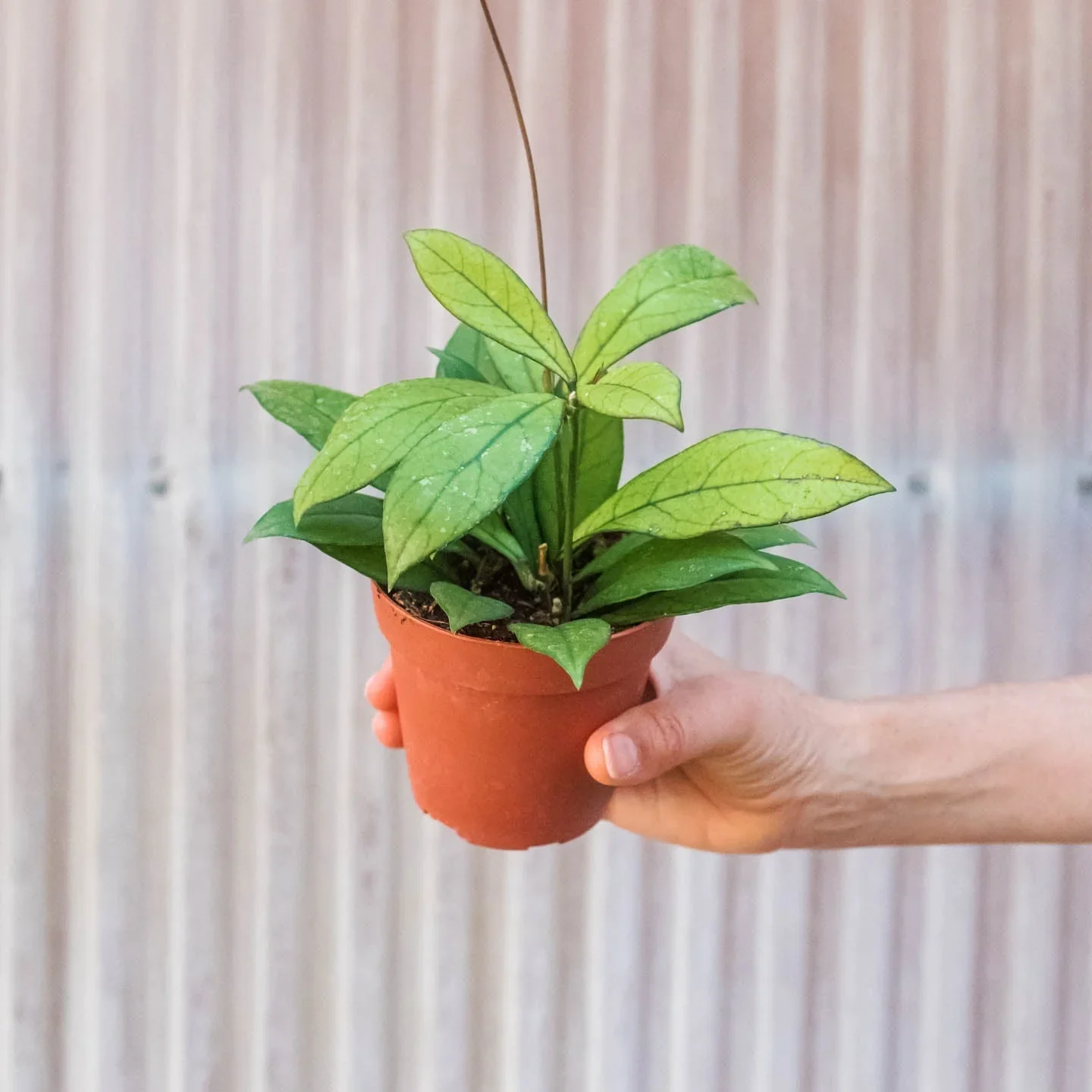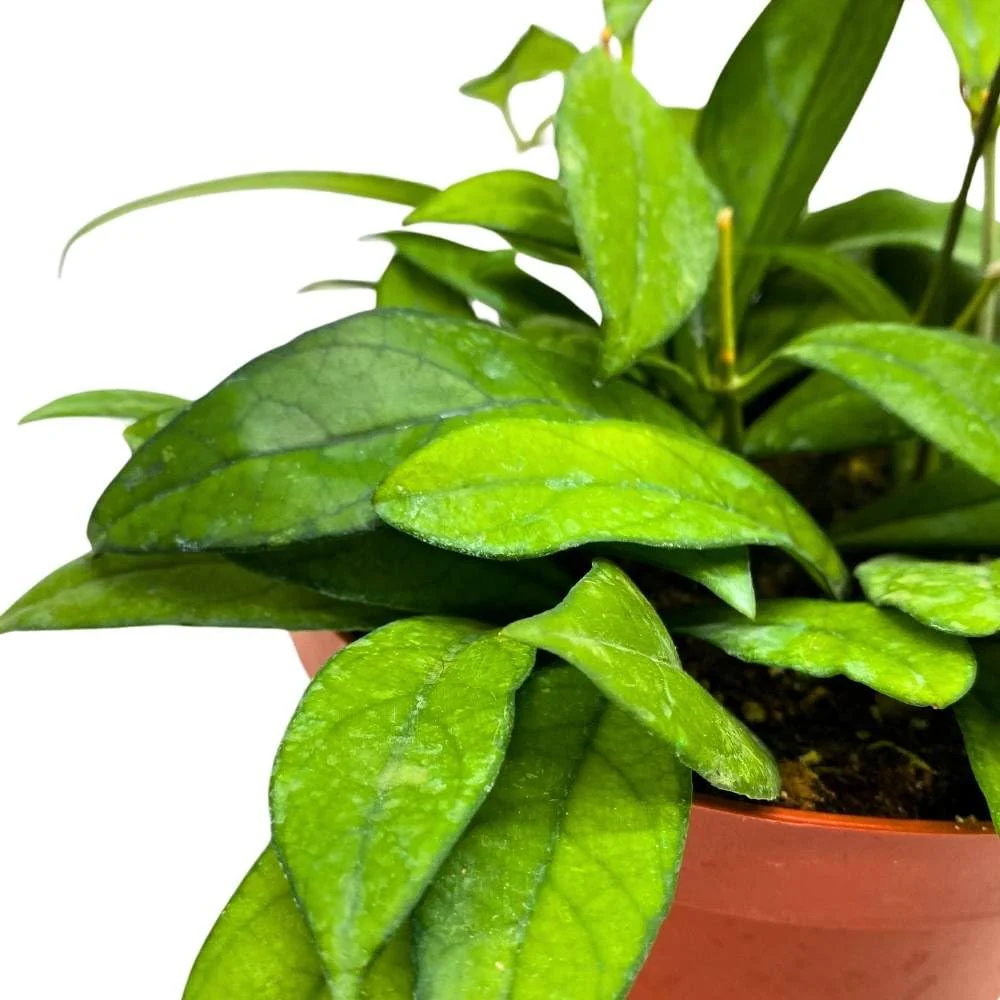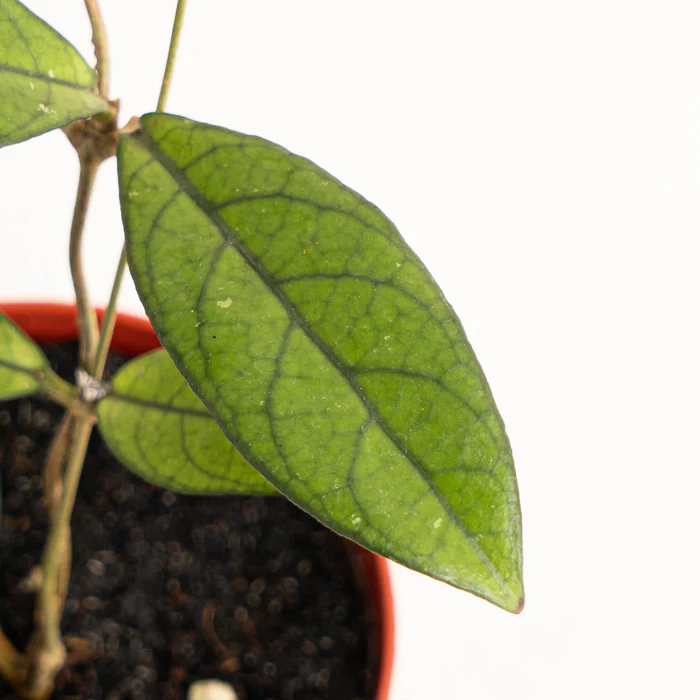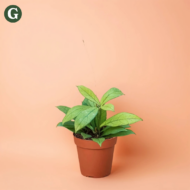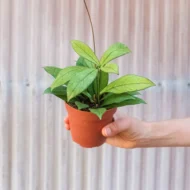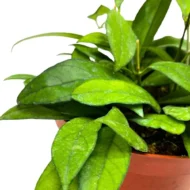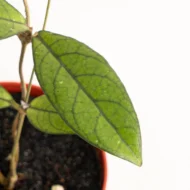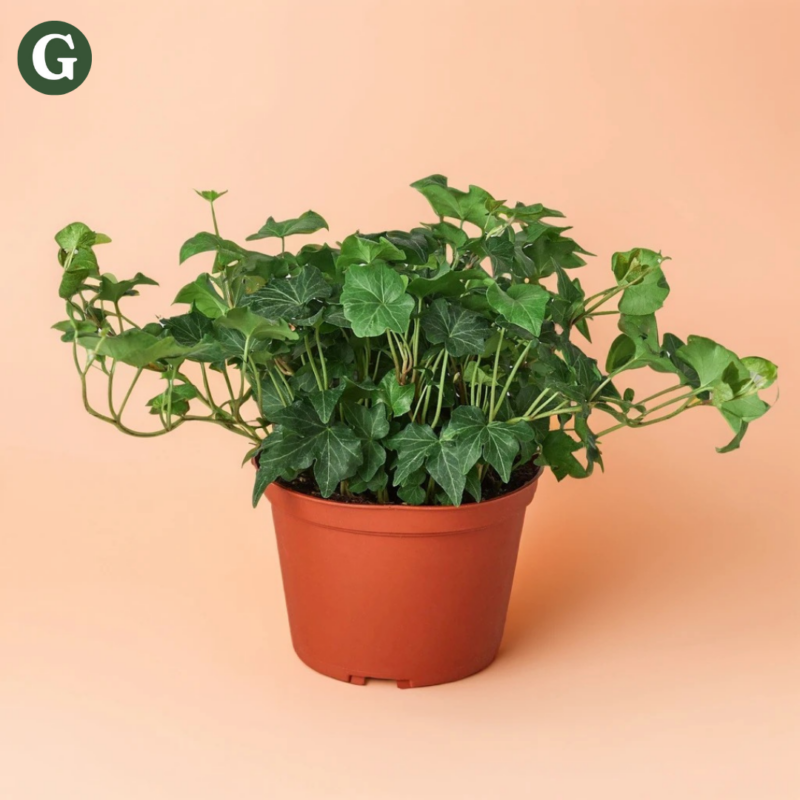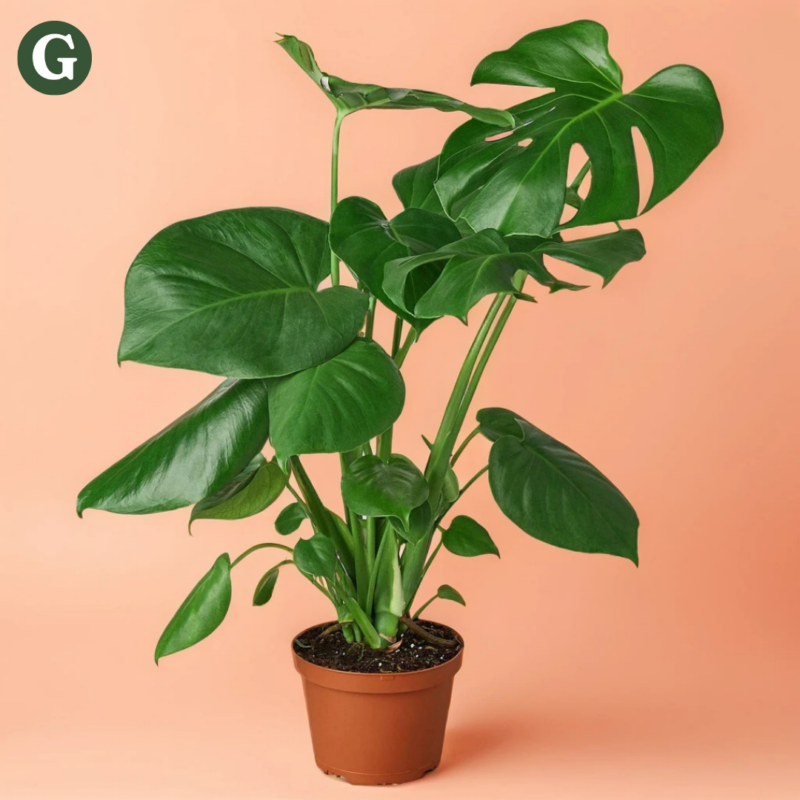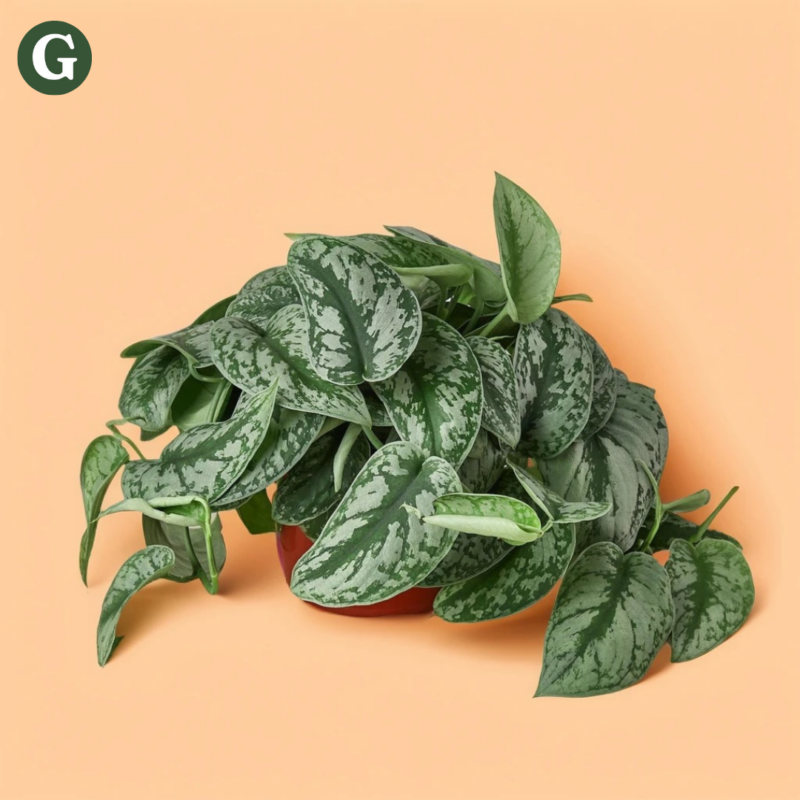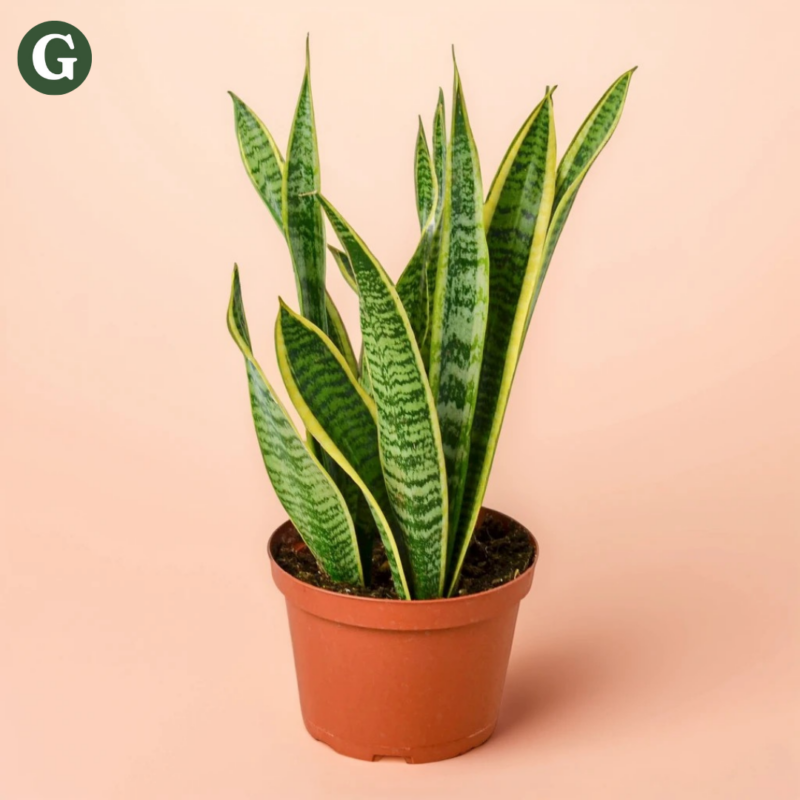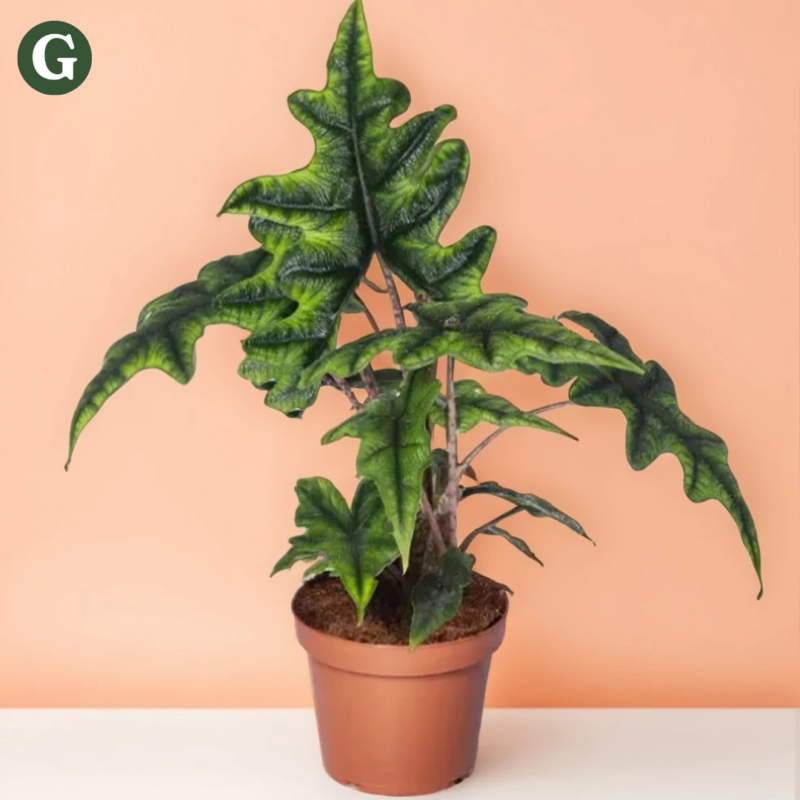Hoya Crassipetiolata
Botanical Name: Hoya crassipetiolata
Common Name(s): Crassipetiolata Hoya, Wax Plant, Wax Rubber Plant
The Hoya Crassipetiolata is a relatively rare and unique Hoya, native to the tropical regions of Southeast Asia. Known for its striking appearance and fragrant flowers, this plant is a beloved addition to any collection of tropical or succulent plants. The plant is a climbing vine that can be trained to grow along a trellis, in a hanging basket, or allowed to trail gracefully from a pot. Additionally, it is often appreciated for its thick, fleshy leaves and compact growth habit.
The leaves of Hoya Crassipetiolata are thick, oval-shaped, and slightly leathery, with a deep green color that gives the plant a lush and healthy appearance. The leaves are arranged alternately along the stems and have a waxy texture that helps the plant conserve moisture, making it slightly drought-tolerant. The plant’s stems are slightly thickened and somewhat woody, allowing it to climb and spread easily.
In addition to its attractive foliage, the Hoya Crassipetiolata blooms profusely during its flowering season, typically in the spring or summer. The flowers are small, star-shaped, and typically creamy white or pale yellow, often with a darker center.
This Hoya thrives in bright, indirect light, although it can tolerate some direct sunlight, particularly in the morning. When grown indoors, it's best to place it near a south- or west-facing window where it will receive ample light for healthy growth and flowering. It is important to avoid placing it in too much direct afternoon sun, as this can scorch the leaves.
As with most Hoyas, the Crassipetiolata is relatively low-maintenance, making it an excellent choice for both beginner and experienced plant enthusiasts. The plant is drought-tolerant, and overwatering should be avoided. It's best to allow the soil to dry out between waterings to prevent root rot. A well-draining soil mix, such as cactus or succulent mix, is ideal for this plant, and a pot with drainage holes is essential to ensure excess water can escape.
Note: Like other Hoyas, Hoya crassipetiolata is non-toxic to pets, making it a safe option for households with cats and dogs.
Care Insights & Expert Tips
- Avoid Disturbing the Roots: Hoya plants don't like their roots to be disturbed, so repot them only when necessary.
- Use a humidifier: This plant benefits greatly from the use of a humidifier or high humidity area for healthier leaves.
- Enjoy the rare flowers: This Hoya is also known for beautiful, fragrant white or pale yellow flowers. To encourage blooming, provide plenty of bright light and avoid overwatering.
- Avoid drafts: Avoid placing this plant near cold drafts or air conditioning vents.
- Watch for pests: Watch out for pests like mealybugs and spider mites. Treat infestations promptly with insecticidal soap or neem oil.

Visit our plant care library
Find essential tips to keep your plants thriving, vibrant, and healthy.

